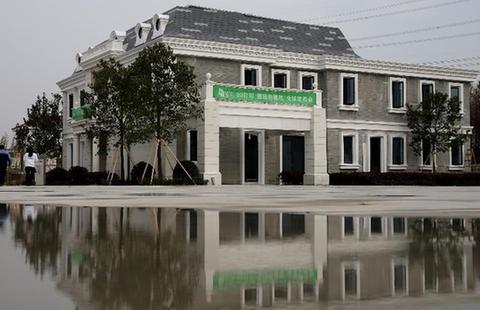
Technology needed
For one thing, there is the sheer size of the China market. For examples:
Beijing's IT spending is greater than for all of Mexico, which has a population of 122 million and GDP of $374 billion.
Guangdong's IT spending exceeds that of Sweden, a small but advanced country with GDP of $192 billion.
These numbers are almost certain to increase, especially as China's 13th Five-year Plan, which starts in 2016, will put heavy emphasis on advanced technology.
In particular, the government has made the development of "smart cities"-using information technology to address key urban problems and issues-a top priority.
This involves, for example, developing database and network systems to manage traffic or electricity grids, coordinate public services and make more information available to city managers and the public.
More broadly, the new plan will also promote greater use of the Internet of Things, which refers to the interconnectivity of everyday devices to make daily life easier and more efficient. Chinese leaders have already identified the IoT as a key industry and are looking to Chinese companies to take the lead in developing new technologies and products.
Interconnections among devices will expand geometrically with the still unsaturated growth of devices into China.
Many analysts believe that with its strong technology manufacturing base, China is poised to set the global standard in this area. One example: 80 percent of the world's smartphones are made in Guangdong province. The factories that produce them are well-placed to turn to products for the IoT.
Expanding e-commerce
On top of this has been the stunning growth of e-commerce in China. Alibaba, for instance, had $9.14 billion worth of transactions on just one day, which was Singles' Day on Nov 11. It is now the world's third-largest Internet company, after Google Inc and Facebook Inc.
What is next?
With so many developments on so many fronts, there is certainly a role for foreign IT companies in China. The challenge is to determine what that role should be. This means recognizing that China is not the same as it was a decade ago, and a business model based on simply selling pre-existing products to the Chinese market is not necessarily going to work.
Rather, the companies that identify openings in the changing landscape for innovative new products will have the best chance of success.
For example, China plans to have 95 percent of the country connected to broadband. It is estimated that by 2018, there will be 1 billion smartphone users.
But such growth in users may result in the actual online experience not being such a happy one, with slow connections, difficulties in downloading and widespread consumer frustration. A company that can develop technology to boost network connectivity, or strengthen the signal, will find big demand in a steadily expanding market.








